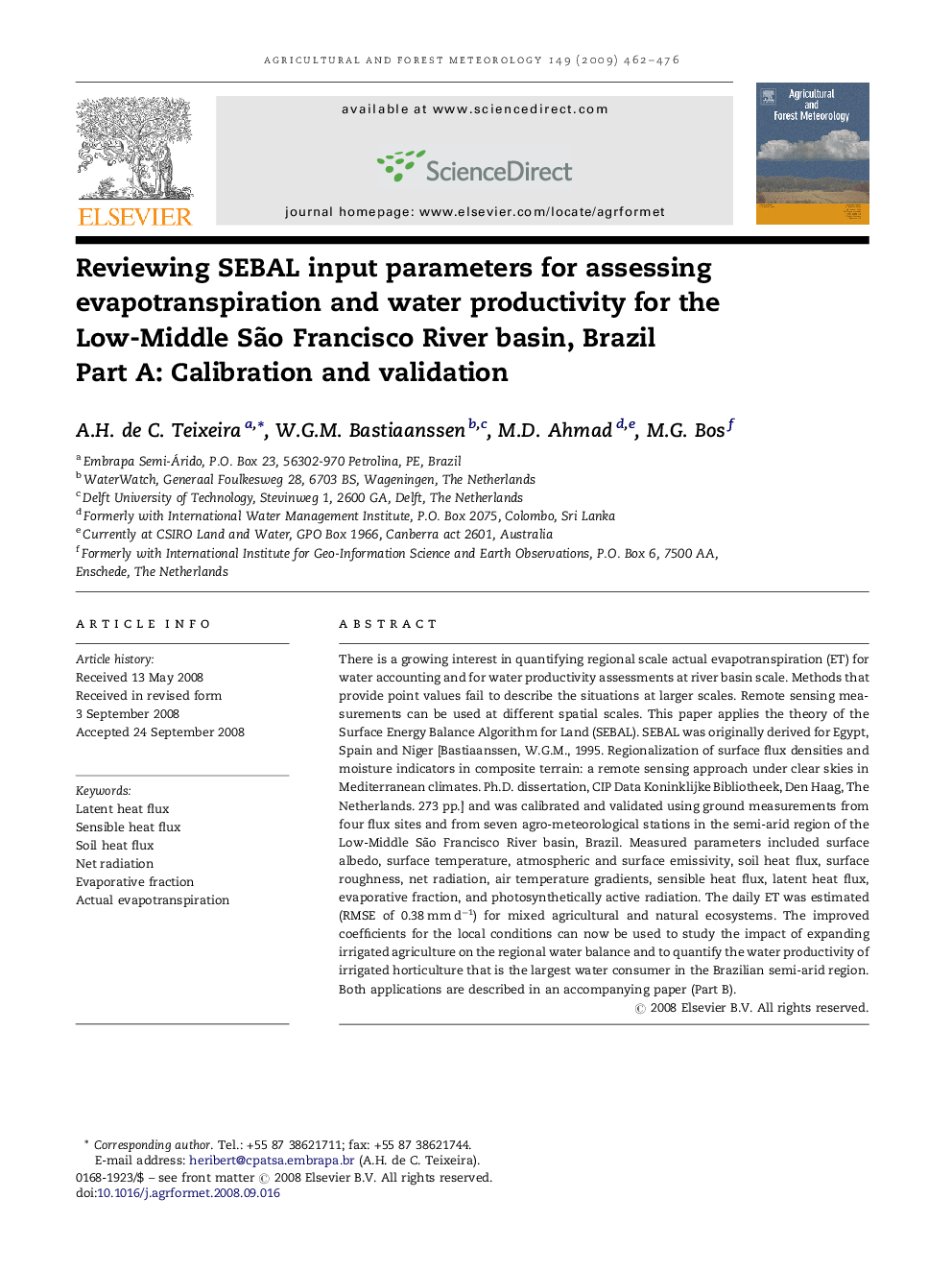| Article ID | Journal | Published Year | Pages | File Type |
|---|---|---|---|---|
| 82728 | Agricultural and Forest Meteorology | 2009 | 15 Pages |
There is a growing interest in quantifying regional scale actual evapotranspiration (ET) for water accounting and for water productivity assessments at river basin scale. Methods that provide point values fail to describe the situations at larger scales. Remote sensing measurements can be used at different spatial scales. This paper applies the theory of the Surface Energy Balance Algorithm for Land (SEBAL). SEBAL was originally derived for Egypt, Spain and Niger [Bastiaanssen, W.G.M., 1995. Regionalization of surface flux densities and moisture indicators in composite terrain: a remote sensing approach under clear skies in Mediterranean climates. Ph.D. dissertation, CIP Data Koninklijke Bibliotheek, Den Haag, The Netherlands. 273 pp.] and was calibrated and validated using ground measurements from four flux sites and from seven agro-meteorological stations in the semi-arid region of the Low-Middle São Francisco River basin, Brazil. Measured parameters included surface albedo, surface temperature, atmospheric and surface emissivity, soil heat flux, surface roughness, net radiation, air temperature gradients, sensible heat flux, latent heat flux, evaporative fraction, and photosynthetically active radiation. The daily ET was estimated (RMSE of 0.38 mm d−1) for mixed agricultural and natural ecosystems. The improved coefficients for the local conditions can now be used to study the impact of expanding irrigated agriculture on the regional water balance and to quantify the water productivity of irrigated horticulture that is the largest water consumer in the Brazilian semi-arid region. Both applications are described in an accompanying paper (Part B).
